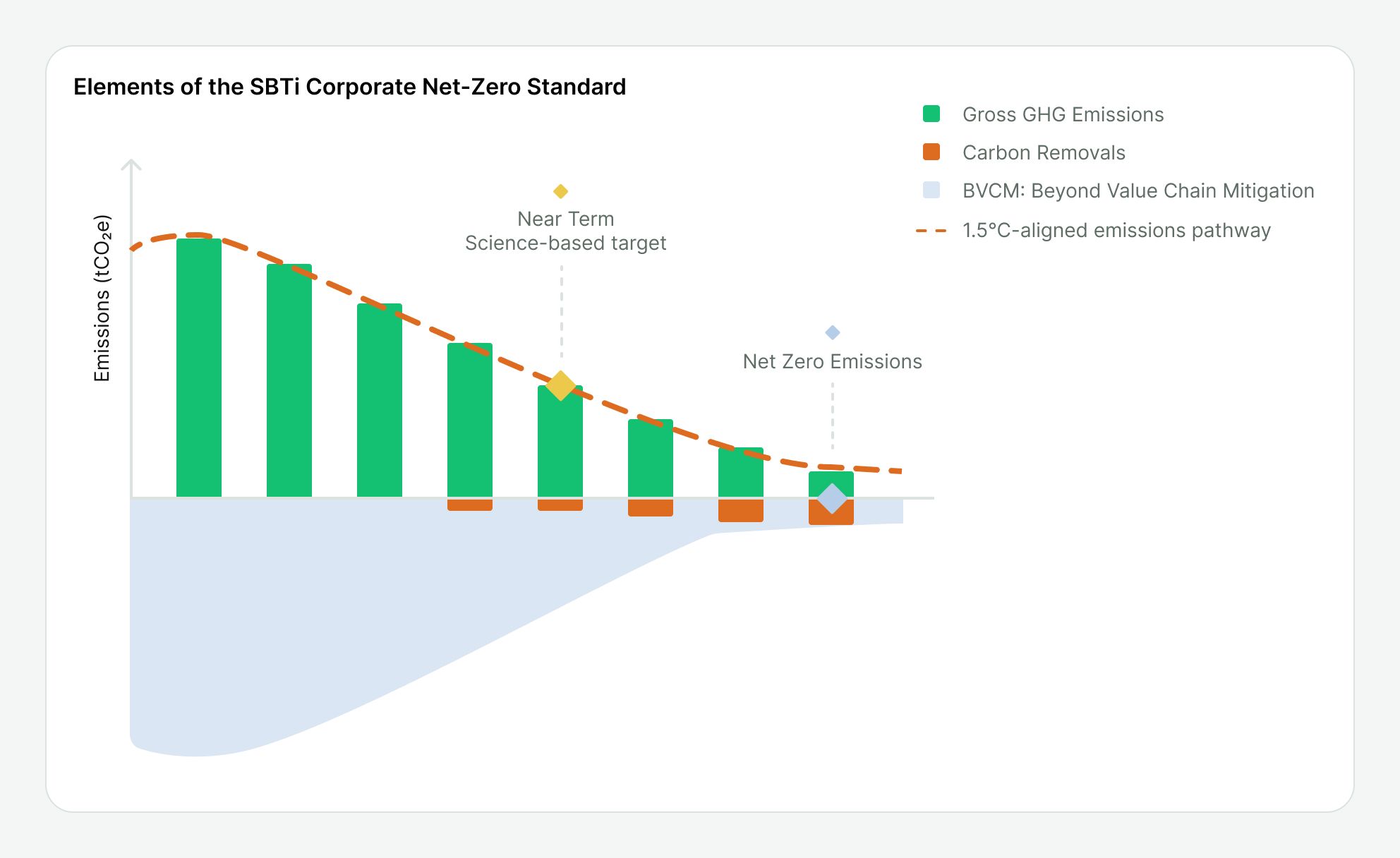
Why forests make a significant difference in climate change mitigation
2/14/2024
|
Bettina Fuhrmann

Learn step by step
-
From the big picture to the project: What has changed as a result of the Paris Climate Agreement and what does the Net Zero target mean in concrete terms
-
Understand the role and relevance of nature-based solutions. Read more about why forests make a significant difference to climate protection.
-
Why invest? 3 benefits of forest projects and how we can help you realise the full potential of local forests: Efficient carbon sequestration and storage, Promotion of biodiversity and ecosystem resilience, additional benefits for local communities.
The global increase in CO₂ emissions is one of the biggest challenges facing humanity today and requires immediate, collective action. In view of this, companies are faced with the urgent task of actively reducing greenhouse gas emissions. Existing regulatory measures are considered mandatory, but are not sufficient in the fight against climate change. We will speak about the role of nature-based solutions and their potential to have a positive impact. Forests explicitly act as effective carbon sinks and play a crucial role in global climate regulation.
In numbers, terrestrial ecosystems remove about 30% of human CO₂ emissions annually, of which forests are responsible for the largest share. In the period between 2000 and 2007, 8.8 Gt of a total of 9.5 Gt of CO₂ equivalents per year were reduced from the atmosphere by forests.¹ Investments in forests are therefore not only ecologically sensible, but also strategically important for forward-looking companies.
We need to understand the relevance of forests in the context of nature-based solutions in the fight against climate change and how we can utilise them.
Let's start from the beginning
Current status quo on emissions reduction
The primary purpose of emissions regulation is to enable actors such as governments, individuals and companies to offset/neutralise greenhouse gas (GHG) emissions. This takes place within two carbon markets: the regulatory and the voluntary. Voluntary support for projects helps to reduce, prevent or completely eliminate emissions elsewhere and thus go one step further than the required "bare minimum".
The newly defined Paris Climate Agreement, which came into force in 2021, stipulates that all signatory states - not just the industrialised countries included in the Kyoto Protocol - are bound to the goal of limiting global warming to 1.5 degrees above pre-industrial levels. In concrete terms, it stipulates a binding commitment to reduce emissions by 45% relative to 2010 levels by 2030 in order to achieve the goal of net zero by 2050.
What does net zero mean?
The Voluntary Carbon Markets Integrity Initiative (VCMI) defines the term net zero in relation to the IPCC Article 6 report as follows: "Net zero" is achieved as soon as the amount of anthropogenic greenhouse gases released into the atmosphere globally is fully offset by equivalent emission reduction or absorption measures.
On the road to net zero, the highest priority is to reduce all emissions by around 90%. The remaining 10% can be offset by nature-based or technical CO₂ removals.
 ²
²
The green bars visualise emission reductions within the value chain, with the aim of reducing emissions by around 90% by 2050. During this process, it is important to promote the preservation and expansion of natural CO₂ sinks beyond the value chain (BVCM) to avoid further degradation, which is illustrated by the blue area below. The orange area describes the reductions within the lower range that must be made from a certain point onwards. In the long term, for every tonne of CO₂ emitted, an equivalent amount must be removed from the atmosphere in order to credibly achieve the net-zero target.
Achieving net zero is crucial in the fight against climate change: the endeavour involves reducing CO₂ emissions through more efficient processes, renewable energy and sustainable practices, while investing in projects such as reforestation or CO₂ sequestration to offset the remaining 10% of emissions.
Nature-based solutions and their role in the fight against climate change
What are nature-based solutions?
Nature-based solutions (NBS) are measures that aim to utilise and mimic natural processes to address environmental, social and economic challenges. They include approaches such as ecosystem restoration, reforestation, sustainable agriculture and the creation of green infrastructure. These solutions seek to maximise the benefits of ecosystems, such as absorbing CO₂, improving water quality and promoting biodiversity, while helping to mitigate and adapt to the effects of climate change.
There are various projects that utilise nature-based solutions to reduce CO₂ emissions. In addition to forests, wetlands (such as peatlands), oceans and soils are also considered natural carbon sinks on Earth. NBS comprise of various measures, including the prevention of fundamental changes in soils, forests and wetlands, the reforestation of forests and the restoration of wetlands, overall improved land management or improved forest management, as well as soil sequestration.
Forests and their storage potential play a significant role in this context, which is why it is essential to maintain and expand the sink capacity of forests. We have summarised three major benefits of forests that make it clear why it makes sense to invest in forest carbon offset projects in order to generate a real, positive impact and go one step further.
Why forests are worth investing in
Efficient carbon capture and storage
Forests are natural carbon sinks - forest carbon projects have great potential to sequester significant amounts of carbon dioxide from the atmosphere: Through improved forest management, natural carbon sinks can be preserved and expanded over large areas. These projects also invest in afforestation and reforestation, i.e. the planting and replanting of previously non-forested areas. Forests act as carbon sinks by absorbing CO₂ during photosynthesis and storing it in their biomass and soils. This capacity for large-scale carbon sequestration makes forest carbon projects particularly effective in combating climate change. Forest carbon credits offer extensive climate protection benefits per unit area through measures such as improved forest management, afforestation and reforestation.
Promoting biodiversity and ecosystem resilience
Forests support a large number of plant and animal species and are therefore crucial for the preservation of biodiversity. Forest projects integrate measures to protect and restore ecosystems, including wildlife habitats, which helps to protect biodiversity. By conserving and restoring forests, these projects help protect endangered species and maintain ecosystem services on which many communities depend. Forest carbon credits that focus on the conservation of existing forests prevent the loss of irreplaceable carbon sinks and help avoid critical tipping points in nature. This is an effective strategy to provide much-needed financing to promote forest restoration.
Social co-benefits
Forest carbon projects have immediate, positive impacts and environmental benefits. Forest carbon projects can generate various co-benefits for local communities, including job creation, sustainable livelihoods and improved access to ecosystem services such as clean water and air. When designed and implemented in collaboration with local stakeholders, these projects can strengthen communities' resilience to climate change while promoting socio-economic development.
What now? How can we help?
Our mission is to realise the full potential of European forests. What can we do together? We implement transformative forest carbon credit projects with proven impact and offer you the opportunity to take responsibility for your remaining emissions.
-
Tree.ly forest carbon projects and their benefits: We currently have more than 100,000 hectares of forest under contract. With Tree.ly, you can support specific and verified projects directly in your region and make an active contribution to regional climate protection. With the help of your contribution, measures are implemented to cultivate climate-resistant tree species in local forests, optimise forestry, expand the natural CO₂ sink capacity and create and preserve the habitat for native species. Find a forest project
-
CO₂ credits with certified quality: Our projects are externally validated by TÜV Austria in accordance with ISO standard 14064-2 and our credits are subsequently certified. We accompany the entire certification process and receive annual monitoring by TÜV to ensure that our projects have a positive impact. Together with the forest owners, we develop an action plan that we make transparently accessible to you. Understanding the methodology
-
Promoting regional forests: Our projects promote regional forests and local communities in your neighbourhood. We can put you in touch with local forest owners to get an idea of the additional benefits they can generate.

Become a role model for regional commitment and invest in a forest climate protection project from Tree.ly
Sources: (All publicly available)
¹ S Hovorka & P Kelemen (2021) "The Building Blocks of CDR Systems: Geological Sequestration" CDR Primer, edited by J Wilcox, B Kolosz, J Freeman, Link
² WBSC (2022) The Role of nature based solutions in strategies for Net Zero. Nature Positive and addressing Inequality, Link










